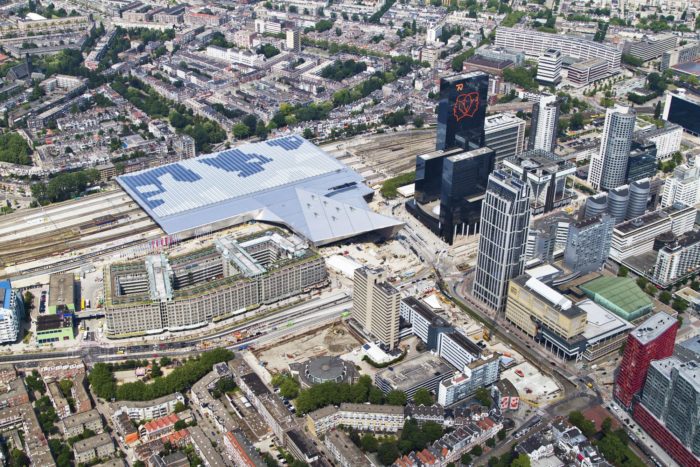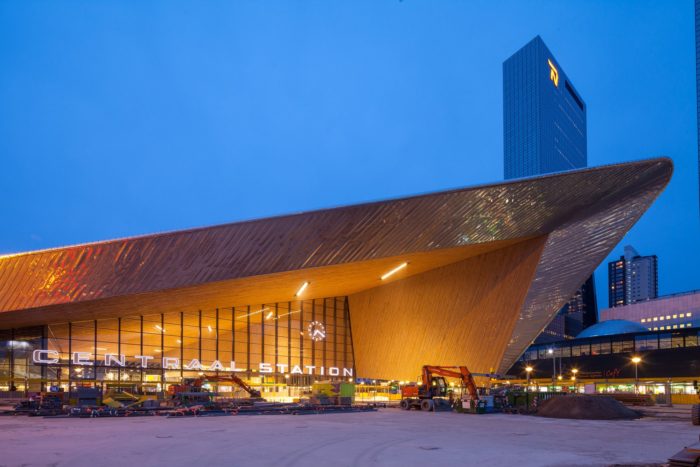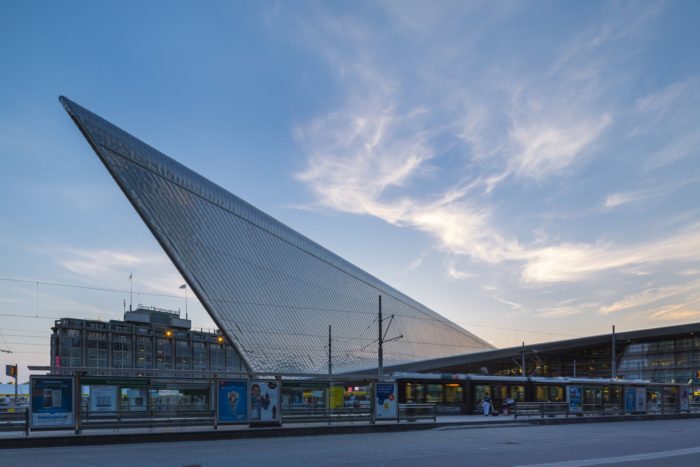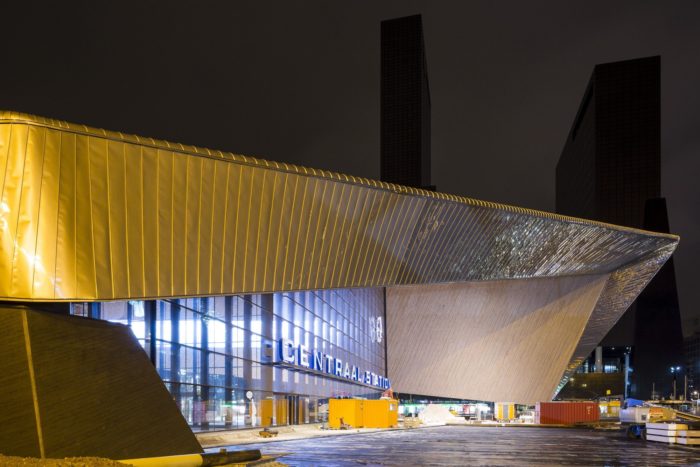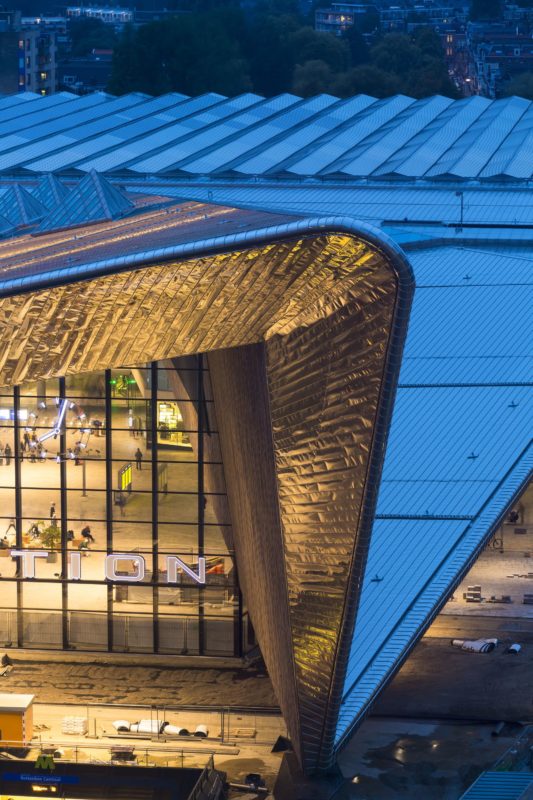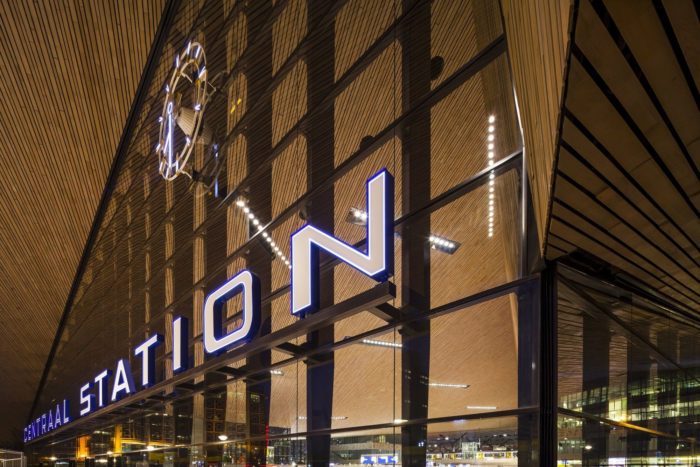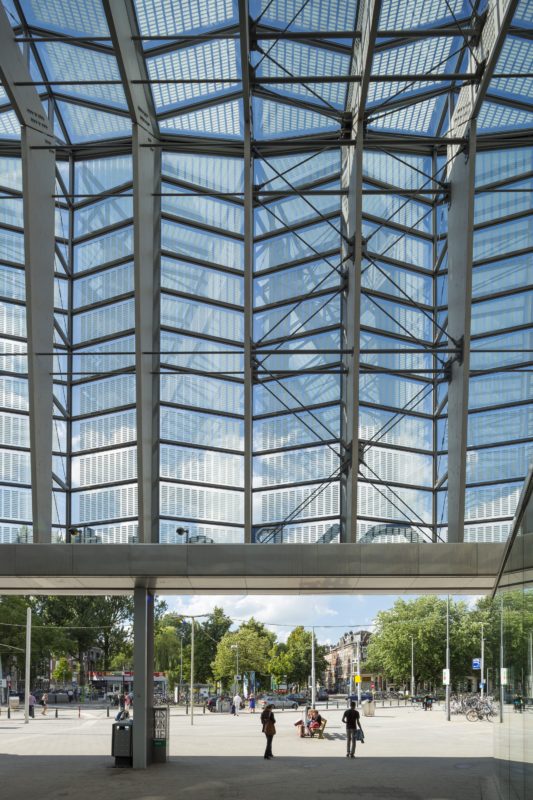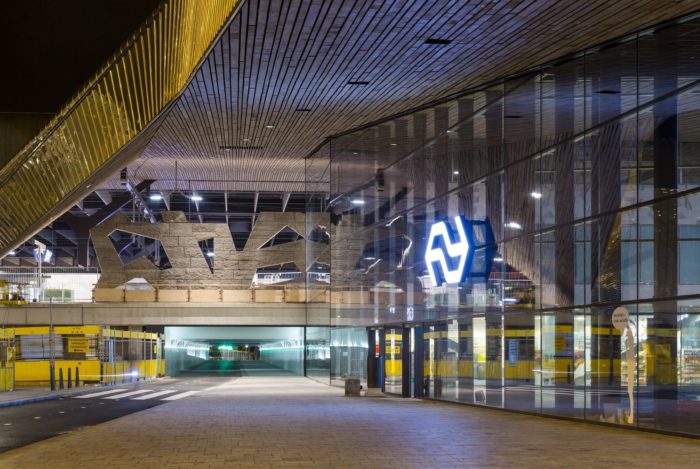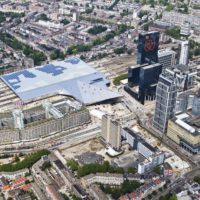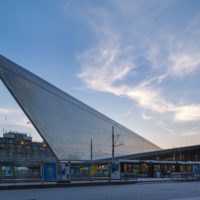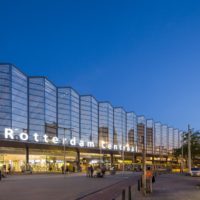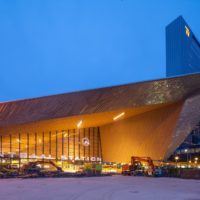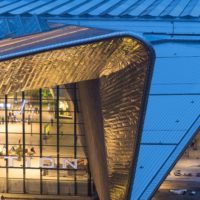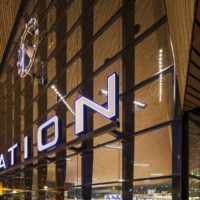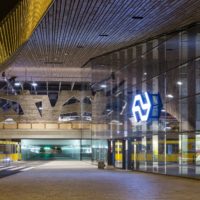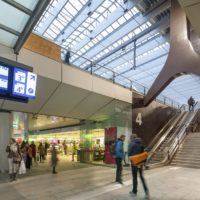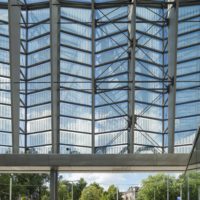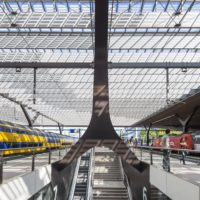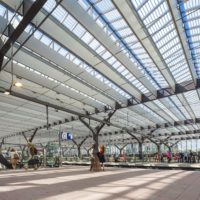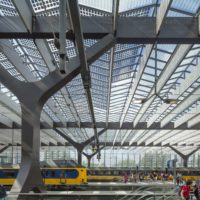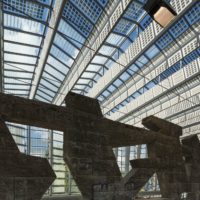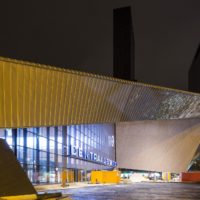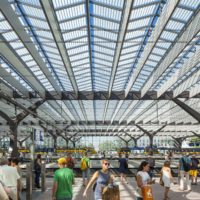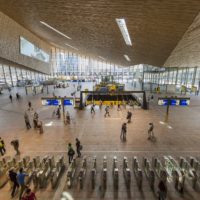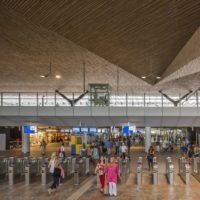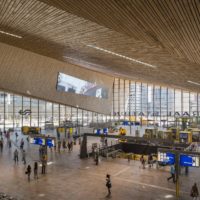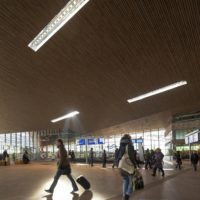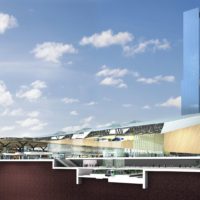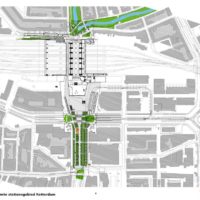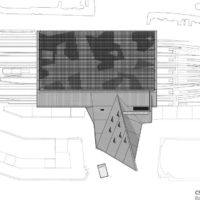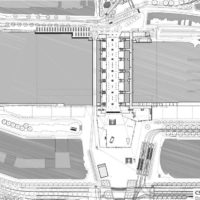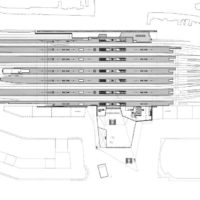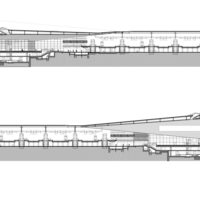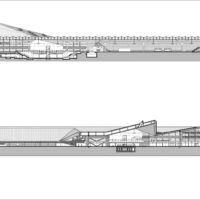Rotterdam Central Station
Rotterdam Central Station is one of the most important transport hubs in The Netherlands. With 110,000 passengers a day the public transport terminal has as many travelers as Amsterdam Airport Schiphol. In addition to the European network of the High Speed Train (HST), Rotterdam Central is also connected to the light rail system, RandstadRail. With the advent of both the HST and RandstadRail the number of daily travelers at Rotterdam Central is expected to increase to approximately 323,000 by 2025.
One of the fundamental challenges of Rotterdam Central station was the difference in the urban character of the north and south side of the station. The entrance on the north side has a modest design, appropriate to the character of the neighborhood Provenierswijk and the smaller number of passengers. The entrance gradually connects to the city. In the Provenierswijk the character of the 19th-century Dutch provincial town is strengthened. Large architectural extensions are avoided on this side of the station, the presence of green is ameliorated and the station is transparent.
In contrast, the grand entrance on the city side is clearly the gateway to the high-rise urban center. Here the station derives its new international, metropolitan identity from the hall made of glass and wood. The roof of the hall, fully clad with stainless steel, gives rise to building’s iconic character and points to the heart of the city.
The esplanade in front of the station is a continuous public space. To achieve this simplicity a parking garage for 750 cars and a bicycle shed for 5,200 bicycles are located under the square. The tram station is moved to the east side of the station, so the platforms broaden the square. Bus, tram, taxi and the area for short-term parking are integrated into the existing urban fabric and do not constitute barriers. The red stone of the station floor continues into the forecourt, merging the station with the city. Pedestrian and cycling routes are pleasant and safe and arriving travelers now have dignified entrance to the city, free from traffic.
Incorporation of natural light, the warmth of the sun’s rays and a modern look are important elements in the design. The platform roof on the Proveniersside is transparent. When the train drives into the station, there is an almost tangible feeling of being enshrouded in the station building. Upon entering in the bright high hall through the center side, the traveler gets an overview of the entire complex and a view to the trains that are waiting invitingly along the platforms.
The wood finish on the inside of the hall, combined with the structural wooden beams of the platform roof creates a warm and welcoming ambience, inviting visitors to linger. The largely transparent roof structure which covers all the tracks over a length of 250 meters, flood the platforms with light. The glass plates of the roof vary the level of light transmittance by utilizing different solar cells patterns, which produce an ever-changing and fascinating play of shadows on the platforms.
The new Rotterdam Central Station is a pleasant, open and transparent public transport terminal which functions as an iconic meeting point. Interwoven into the urban network, the station connects the diverse characters of the city and marks the beginning of Rotterdam’s cultural axis. This modern and efficient building offers travelers to and from the port city all the amenities and comfort they could want or need in the present and the future
Windows with 130,000 solar cells cover 10,000 m2 of the total roof area of 28,000 m2. This is the largest application of solar energy in a station roof in The Netherlands and is also one of the largest rooftop solar projects in Europe. The solar cells are placed on the parts of the roof that get the most sun, taking into account the high buildings around Rotterdam Central. The glass panels vary in light transmittance by using different patterns in the solar cells. Where the roof has the greatest efficiency in terms of sunlight, the cell density is the highest. The solar cells that are integrated in the roof have a high degree of transparency, so there is ample light. The solar cells represent an 8% reduction in the station’s CO2 emissions. The cells are expected to generate 320 megawatt per annum, which is enough energy for 100 households.
By:Delia Chang
- Photography By Skeyes
- Photography By Jannes Linders
- Photography By Jannes Linders
- Photography By Jannes Linders
- Photography By Jannes Linders
- Photography By Jannes Linders
- Photography By Jannes Linders
- Photography By Jannes Linders
- Photography By Jannes Linders
- Photography By Jannes Linders
- Photography By Jannes Linders
- Photography By Jannes Linders
- Photography By Jannes Linders
- Photography By Jannes Linders
- Photography By Jannes Linders
- Photography By Jannes Linders
- Photography By Jannes Linders
- Photography By Jannes Linders
- Photography By Jannes Linders
- Sectioned Perspective
- Site Plan
- Roof Plan
- Ground Floor Plan
- Second Floor Plan
- Sections
- Sections


